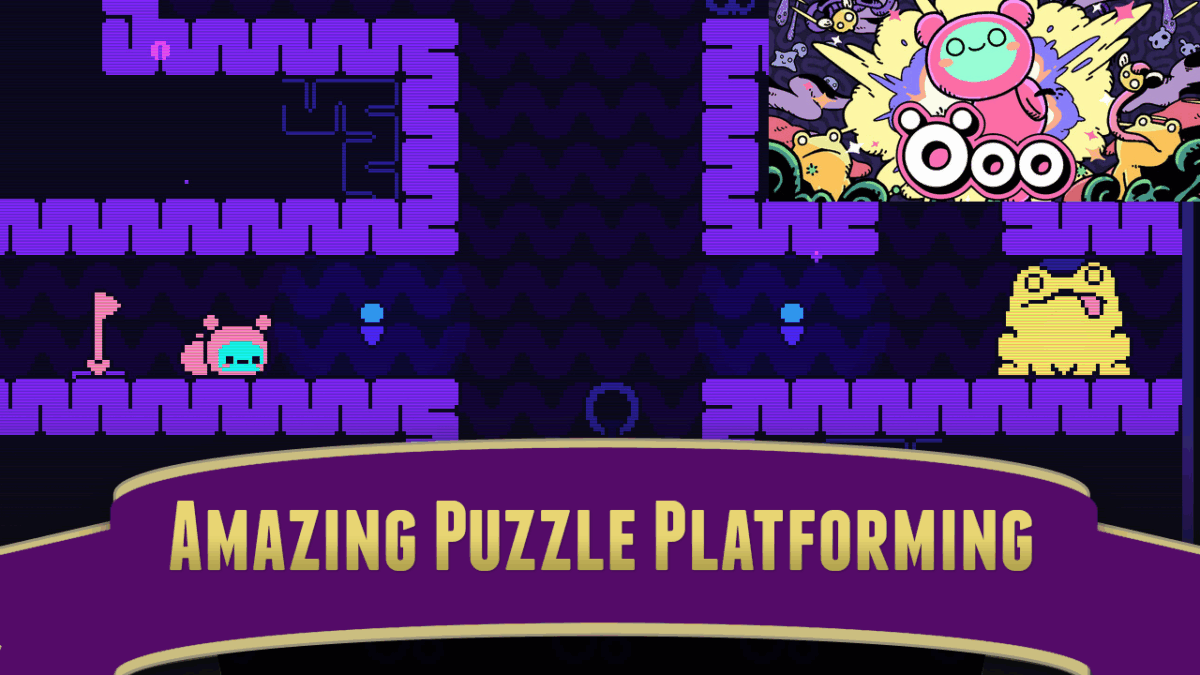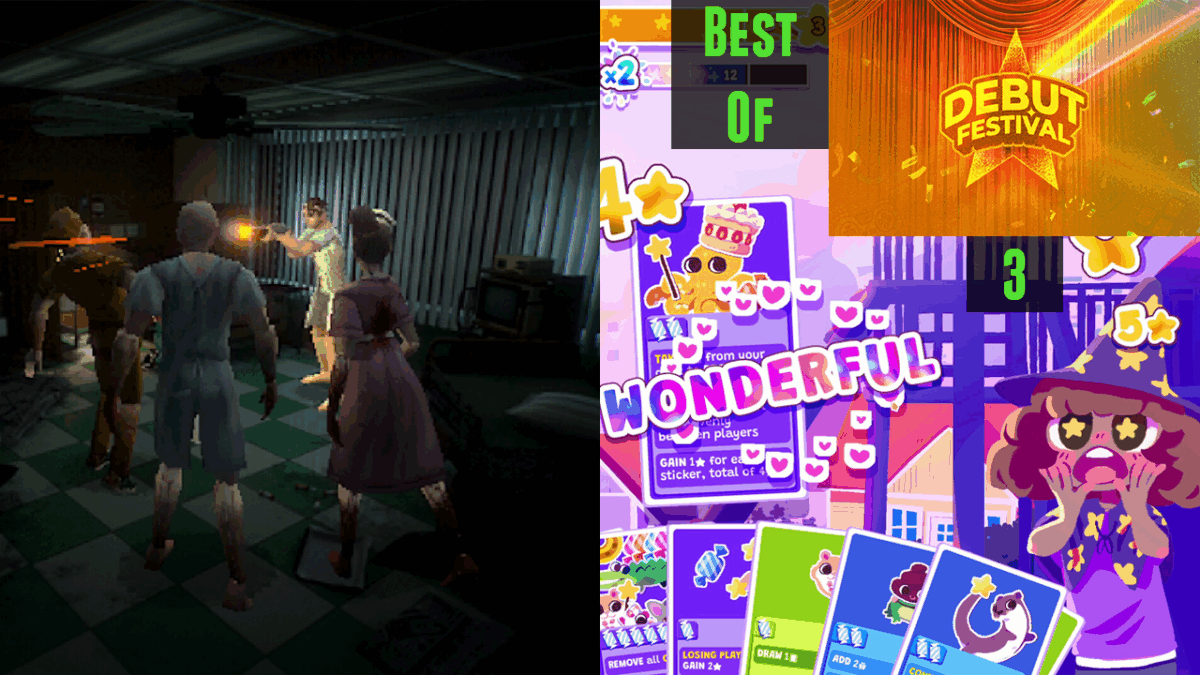This is video review of the game Öoo played with a press key.
Sundry Sunday: The Failed Pilot for the Bubsy Cartoon
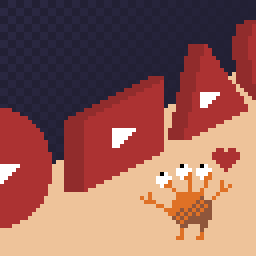
Sundry Sunday is our weekly feature of fun gaming culture finds and videos, from across the years and even decades.
Bubsy has been undergoing a bit of a revival lately, with a well-received collection out from Limited Run/Atari and an upcoming 3D platformer that’s the talk of the flat-toned polygonal town.
Soon after release hopes were high for Bubsy. Games like Sonic the Hedgehog and… well… Sonic the Hedgehog 2 had the world convinced that edgy animal mascot platformers were golden, and characters like Aero the Acrobat and Awesome Possum invested our consoles like wisecracking vermin. Bubsy was just one of them.
Bubsy got a pilot for an animated show. It follows. (27 minutes)
Another failed pilot from the time was one for Battletoads (22 minutes). Earthworm Jim’s pilot was actually successful, and its cartoon lasted for two seasons, and it wasn’t all that bad. Bubsy’s cartoon… well, see for yourself.
Mechanical Hand-Held Games
Robin from 8-Bit Show-And-Tell has mentioned Loadstar, the magazine that I am trying to help preserve with the itch.io version of Loadstar Compleat. I say that just to mention anything that might even be slightly considered to be conflict of interest. There, done. All of this said, this post has nothing to do with any of that!
Before Tiger’s line of cheap handheld mechanical electonic games in the 80s and 90s, there were cheap handheld mechanical wide-up games in the 70s and 80s! These are basically forgotten by most people today, but kids of that age might vaguely remember them, made by companies like Tomy.
There used to be more websites dedicated to uncovering and preserving them. One that remains to this day is the Handheld Museum, which has an extensive listing of Tomy’s titles.
Another place you might be able to learn about them, with demonstrations, is Robin’s video on them. (29 minutes)
Robin shows off a variety of them, including a variety of electric (as opposed to electronic) games. Some weren’t even battery powered, instead having to be wound up via a dial on the back, but all but the last of the games in this video run on batteries. One had to be repaired on camera. The first game is the earliest, a solitaire version of poker, dating to 1971; for context, Pong, the first commercially successful video game, was made in 1972.
It just goes to show that personal gaming was something that existed even before video games. It was something in the air at the time, and even if Pong hadn’t happened (or the earlier Computer Space, or the Odyssey, or even prior games made at universities and laboratories), it seems evident that it would have happened shortly anyway. It was an idea that was bound to happen eventually, and probably sooner rather than later.
Black Friday on the Switch eShop
This is everything that’s at least half-off in the eShop’s Black Friday promotion this year.
Black Friday has slowly been creeping out over the entirety of Thanksgiving Week, and in its stupidly-named “Cyber Monday” incarnation the week after too. Nintendo’s eShop has begun its Black Friday sale early. Here’s a recap of the items being sold that are at least 50% off. As always, no one is paying for this placement; it’s being offered as a service to our readers. Most of these discounts are set to last about four more days.
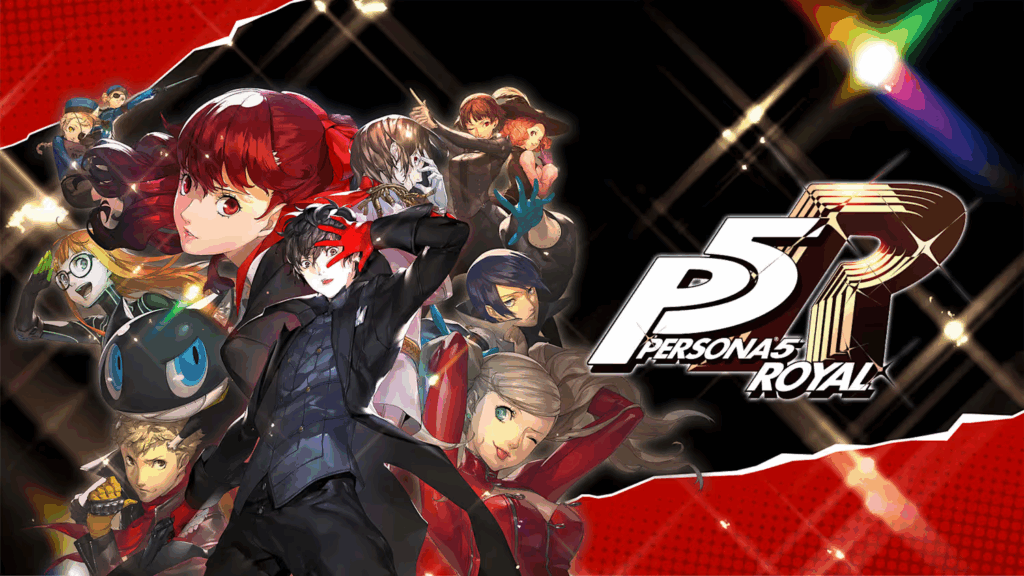
Persona 5 Royal
$21 (65% off)
https://www.nintendo.com/us/store/products/persona-5-royal-switch/
Mario + Rabbids Kingdom Battle
$10 (75% off)
Gold Edition
$12 (80% off)
Season Pass
$4 (80% off)
Overcooled! All You Can Eat
$13.59 (66% off)
Cult of the Lamb: Cultist Edition
$15 (half off)

Dark Souls Remastered
$20 (half off)
Moving Out 2 Deluxe Edition
$11.20 (66% off)
Borderlands…
3 Ultimate Edition
$24 (60$ off)
Pandora’s Box
$37.49 (75% off)
Crash Team Racing Nitro-Fueled
$14 (65% off)
Sonic x Shadow Generations Digital Edition…
Switch
$30 (half off)
Switch 2
$30 (half off)
Sonic Colors Ultimate
$12 (70% off)
It Takes Two
$20 (half off)

MySims Cozy Bundle
$20 (half off)
MLB The Show 25/
$10 (85% off)
SpongeBob Squarepants…
The Cosmic Shake
$20 (half off)
Battle for Bikini Bottom Rehydrated
$15 (half off)
Wolfenstein II The New Colossus
$6 (85% off)
Shin Megami Tensei V: Vengeance Digital Edition Switch
$28 (60% off)
Dead by Daylight: Tokyo Ghoul Edition
$20 (half off)
Little Nightmares I & II Bundle
$15 (70% off)
Star Wars Grand Collection
Contains: Jedi Knight II: Jedi Outcast, Jedi Knight: Jedi Academy, Bounty Hunter, Knights of the Old Republic I & II, Episode I: Jedi Power Battles, Episode I Racer, Force Unleashed, Republic Commando
$56 (60% off)
Blasphemous 2
$9.89 (67%)
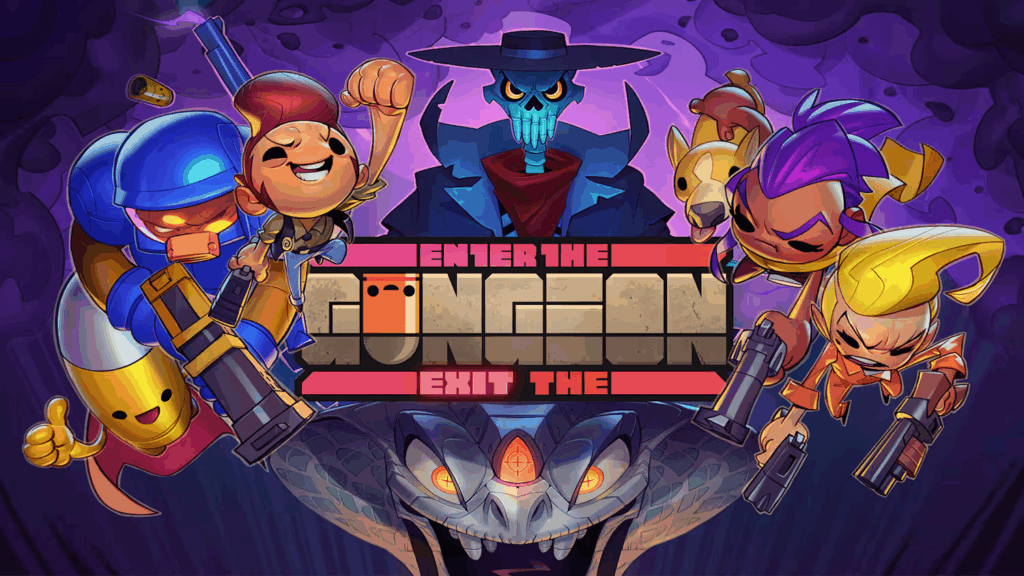
Enter x Exit the Gungeon
$4 (80% off)
Plants vs Zombies: Battle for Neighborville Complete Edition Switch
$7.59 (81% off)
No More Heroes III
$25 (half off)
Travis Strikes Again: No More Heroes
$15 (half off)
Diablo III Eternal Edition
$19.79 (67% off)
X-COM 2 Collection
$7.49 (85% off)
Axiom Verge 1 & II Bundle
$14 (65% off)
Prince of Persia: The Lost Crown Complete Edition
$20 (half off)

The Elder Scrolls V: Skyrim
$16.49 (67% off)
Madden NFL 26
$35 (half off)
FC 26
Switch edition
$30 (half off)
Switch 2 edition
$35 (half off)
Deadly Premonition 2: A Blessing in Disguise
$25 (half off)
And here are a few more notable games at at least an 80% discount. These are not part of the Black Friday/Cyber Monday promotion and may expire sooner.
Umihara Kawase BaZooKa!
$2.39 (92% off)
Cotton Fantasy
$3.19 (92% off)
Ninja JaJaMaru: The Great Yokai Battle +Hell Edition
$3 (90% off)
Nickelodeon Kart Racers
$3 (90% off)
The Warlock of Firetop Mountain Goblin Scourge Edition
$3 (90% off)
Lego DC Super Villains and Lego The Incredibles
$6 apiece (90% off)
Miraculous: Rise of the Sphinx
$5 (90% off)
Ape Out
$2 (86% off)
Broforce
$2 (86% off)
Cannon Dancer – Osman
$3 (85% off)
Giana Sisters: Twisted Dreams – Owltimate Edition
$5 (83% off)
Cotton 100% and Panorama Cotton
$2 apiece (80% off)
What We’re Playing: Turkey Edition
If it’s not the holidays, it certainly is a holiday, at least for those of us in the US. We’re preparing to load up on turkey, or maybe a vegetarian equivalent. We’re occupied with various other things, so please enjoy this report on some games we’ve been playing.
Of course, Kirby Air Riders has been the main thing for me. I just finished the “true ending” of its story mode, Road Trip, a few minutes ago. It’s bombastic and loud, true, but it was nice to see O², Nightmare and Marx as bosses again, and Galactic Nova, from way back in Kirby Super Star, make a return as part of Kirby’s weird lore. For a series originally about beating up a penguin with royal pretensions because he took everyone’s food, Kirby’s certainly killed a lot of Cthulhus.

Now that my excuse to talk about that again is out of the way, I’ve been playing more of Party House and Rakshasa in UFO 50. I’ve already said enough about Party House, and I’m working on a revision of my strategy guide; Rakshasa is also something that should have some things said about it, a very short, very hard take on Ghosts & Goblins with a spicy Indian flavor. It’s a game that revels in randomness, and it’s easy to get overwhemed if you don’t stay on your toes at all times. I actually think its big gimmick, that you don’t have lives, but instead must complete a minigame when you perish, of escalating difficulty each time, to be one of the less interesting things about it.
Besides that, I’ve been working my way through Dragon Quest III 2D-HD, which has some quite major design differences from the Famicom/NES game from 1988. Lots to say about that too—just, later. (BTW, if you think using em dashes means something is written by an “AI,” well, I won’t have much kind to say to you about that belief. Please read better writers.)
And then there’s Blippo+. (trailer above, 1¾ minutes) Published by Panic, who also published Untitled Goose Game and Thank Goodness You’re Here!, and first released for Panic’s little portable system that could, the Playdate, Blippo is simply a pitch-perfect rememberance of 90s TV, although as experienced on another planet. It has weird indulgent kids TV (“The Boredome”), classic MTV-style news programming (“The Rubber Report”), D&D-themed fantasy gameshows like from the UK (“Quizzard”) and even a scrambled porn channel, not real porn, but with a sexy lady’s hand caressing mice and monitors (“Tantric Computing”). It’s wrapped up in presentation that kind of looks like adjusting a satellite receiver, and all the shows are like one minute long. It’s weird, unexpected and fun, like everything else Panic makes.
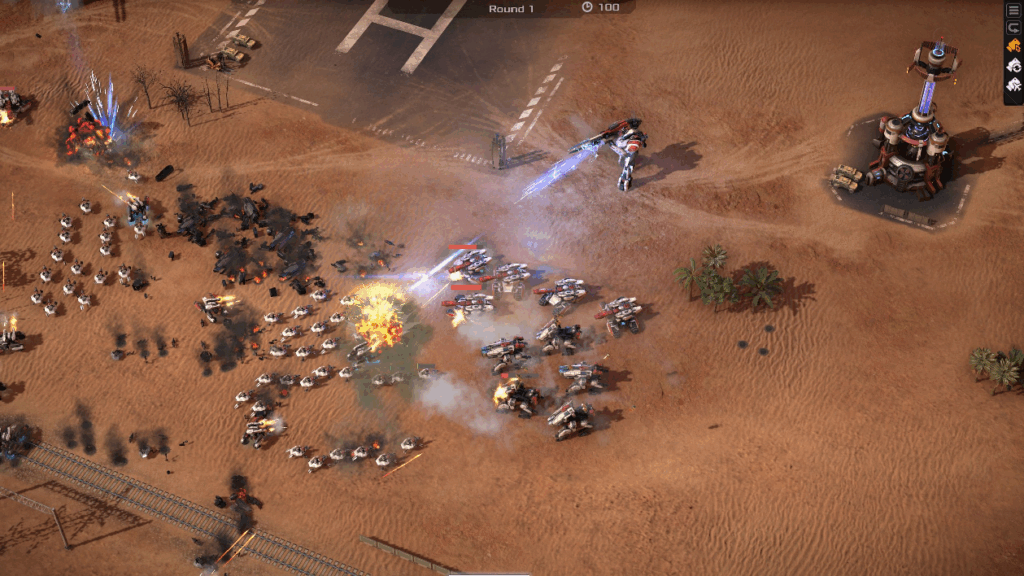
Statue’s most recent focus has been Mechabellum, because as they told me, “I like games that trick me into doing math.” I think one could say that all turn-based strategy games are doing math in one form or another. Math is weird that way.
In addition to all the games they play to review on their Youtube channel Game Wisdom, GWBycer has been playing strategy game Phoenix Point, and its mod Terror From the Void. I didn’t know anything about it until I saw his message about it. Lot of strategy floating around in the air, with Air Riders thrown in to cut it with pure chaos.
WIP Super Mario 64 Port to Playstation
File this under blasphemous acts of hackery, reported on by Video Game Esoterica (Youtube, 10 minutes) and Time Extension, a super-deluxe techno-nuts person going by malucard is trying to port Super Mario 64 to the original Playstation. They have a GitHub repo containing their efforts so far.
The growing number of fan-made decompilations of classic games is what make these hilarious affronts to the very idea of console exclusivity possible. But while ports of such games to PC platforms allow for much greater visual clarity and the resolution of long-standing deficiencies, this is almost a celebration of the idea of technical limitations—and I, for one, am all in favor. But you have to understand, I’ve given serious thought to the idea of picking up an old CP/M machine and coding on it in assembly. I’m crazy pants, is what I’m saying, and on things of this nature you probably shouldn’t be listening to me.
Just look at the footage in that video, and how it’s more glitch than game. It seems impossible that it’ll ever run like the N64 original, but we can dream, can’t we?
Debut Festival Showcase Part 3
Wrapping up my (Josh Bycer’s) coverage of Debut Festival 2025 with more indie game demos.
00:00 Intro
00:24 Felbound
2:07 My Card is Better Than Your Card
4:23 Phase Zero
5:53 Beat, Heart, Beat
6:56 Automatic Kingdom
9:15 Legends of Castile
10:49 Kriophobia
Multilink Monday 11/23/25
Taking another opportunity to get a few tabs out of my browser….
- BlipForge retro sound effect generator (itch.io, $8), for when bfxr (web, free) isn’t enough.
- Luanti, open-source voxel game engine, for realizing the Minecraft of your dreams.
- galacticstudios on the other Star Trek game. The default Star Trek game was a 1971 mainframe game that had a version published in David Ahl’s classic 101 BASIC Computer Games. This game is different from that, it seems.
- The Plush Girls Dozen is a collection of fantasy console games; that’s games for fantasy consoles, not fantasy games for consoles. 10 are for PICO-8, two for TIC-80.
- The GameBrew emulation wiki. (non-Fandom!)
- The Racketboy emulation site.
- I linked yesterday about an instance of the Gigantes legendary machine battle in Kirby Air Riders City Trial. Here’s a full game of it, from Gigantes’ point of view. (8 minutes) I hope this doesn’t become a frequent thing, it might be fun once in a while but not if every other game turns into a huge boss battle.
Sunday Sunday: Kirby Air Riders Meme Videos

Sundry Sunday is our weekly feature of fun gaming culture finds and videos, from across the years and even decades.
Aah these were laying around my video list. If I don’t post them now I’ll never have the chance, so let’s get them out of the way.
Made after the first Global Test Ride, where one particular character was very popular…. (1 minute):
This video seems to imply the two versions of pretentious penguin King Dedede have different designs, but honestly all I see is one of them has bigger irises than the other? (2 minutes)
Thirteen seconds about the dangers of being a pedestrian in Sky City Place Location Zone:
Finally, this isn’t an animation, but something that can actually happen in game. This is a major spoiler, so some space….
For the solid of mind and stout of body who has braved this far down….
There’s a new legendary machine that relates to events near the end of Road Trip, KARs’ story mode, called Gigantes, with stress on the middle syllable: Gigántes. Imagine saying it like SoulCalibur’s narrator says Cervantes. It’s an incredibly huge thing that takes up almost half the city! Immediately the remaining time becomes about defeating it, sort of how like, in Strange Adventures in Infinite Space, certain games get randomly chosen to be Mission Games, where in addition to turning a profit you have to save the universe.
If Gigantes is still active when time expires, then the Stadium automatically becomes Vs. Gigantes, the Gigantes player against all the others in a big dire battle. Like this (3 minutes):
I Fear It’s a Kirby Air Riders Review
I preordered Kirby Air Riders (not much of a surprise considering how much I’ve talked about the original, and the “Global Test Ride” demo.) Am I still enjoying it? YES! It’s like a bigger version of the original. If you’re tired of all these posts on this one game, it’s likely to be my last on the subject, for a while at least. In a few days there’s supposed to be a big launch event, to kick off a year of special event content. I might report on some of that, but c’mon; yesterday I made a post about Microsoft BASIC and the Zorks going open source. I think I’m due a little indulgence.
City Trial remains the main draw, even when I have a bad game it’s still fun. You start, you build up stats over five minutes, then you get a “stadium” (which you can usually pick from now) that tests your build.
Throughout the five minutes all manner of things happen: bosses attack, minigames happen, blanket advantages or disadvantages happen to everyone. It’s chaos, but it’s FUN chaos. Sometimes it feels like you win without trying; sometimes you lose despite everything. Every game is like a little story. But good or bad, it’s over quickly, and you can do it again.
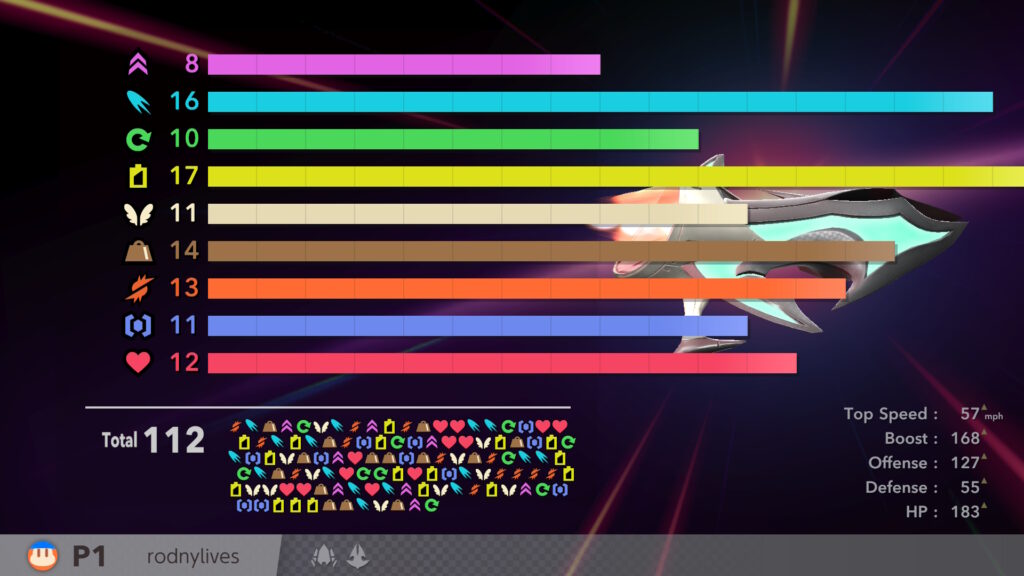
Each run has a selection of special things that can happen during it. One of them is a hunt for pieces of a “legendary machine,” a vehicle with extremely high stats that is sometimes hidden in some boxes. If a player collects one, an icon appears over them during play, signifying to everyone else that they have it. If player with a machine piece is struck by another player they might drop it. If a player gets all three pieces, a notification is given to all the players, and they get to ride it. It happened to me once! Here is video (½ minute):
Other things can happen too! It’s really never the same game twice.
Now, the worst thing about the original Air Ride still applies: there is no Grand Prix mode. (Why not?? I guess the inhabitants of Dream Land don’t have it in them to hold one?)
The most pleasant surprise, besides the fleshed-out, fully online-capable City Trial mode, which feels like the game it was always meant to be, is that Top Ride, the odd mode out of the original, is now decently playable and much more fun. It doesn’t have a Grand Prix mode either, but its races are so short that it barely even matters. I’ve mentioned before that it feels like Sakurai intentionally patterned it after Atari’s ancient Sprint games, which go all the way back to 1974’s Gran Track 10, giving it a legacy that goes back to two years after Pong. It’s playable online too, as well as namesake mode Air Ride.
The new singleplayer mode, Road Trip, is okay, but it’s just a disjointed series of challenges. You do get to build up stats throughout it, giving it an RPG feel, But there’s no exploration or anything like that.
The one thing that connects all the separate modes is Kirby Air Ride’s greatest invention, returning for another go: the Checklist. A grid of 150 boxes, one per mode, with an extra one for Online play. Every one has an unlock requirement.
At first, none of the boxes’ requirements are even revealed. You’re certain to check at least one of them the first time you play each mode though, purely by chance, and the requirements for the boxes around the ones you’ve checked off are revealed to you. Most of the boxes give you a little something when you check them. Some new decals or accessories to decorate your vehicles with. Some of them unlock characters, or machines for use in some modes, or costume pieces. A scant few give you free checks you can spend, to mark off difficult challenges for free. Many (not all) have optional setups you can activate, like little minigames.
Kirby Air Riders’ biggest sin, and greatest virtue, is that it’s really different from other games. It throws out features one would have thought obvious. (Grand Prix modes!) It adds weird new ones for no reason other than the joy of doing so. (Playing with gummis in a physics engine! Customizing machines and selling them in a little fake marketplace!)
And it does unexpected things, like after spending five minutes attacking and avoiding up to 15 other players, having them each choose which Stadium to play in. There isn’t an overall winner: each Stadium has its own winner! And, if you’re the only one to choose a Stadium, you win automatically.
This happens much more rarely than you might assume: it’s only happened to me once, after playing a whole lot of City Trial. Even those rare times were the game randomly decides you’re all playing THIS now, players are still split up into arbitrary groups.
It’s hard to say if you’ll like it because other than Air Ride, there’s nothing really to compare it too. It’s its own thing, but I think that’s what I like most about it. Whatever Kirby Air Riders has, this is the only place to get it. And it definitely has something. It’s a shame that you have to take a seventy dollar gamble on whether it’s something you want. Ideally the Global Test Rides were when one would have tried it out and seen if it was to one’s liking. Maybe they’ll do another one some day, or you can watch Youtube videos of gameplay? (I once again humbly offer my own.) But if this is something you’ll like, you’ll really like it. Maybe use that new Switch “game borrowing” feature to bum it off a friend for a while. It should be experienced at least once.
Microsoft & Open Source Items Of Interest
Microsoft’s Evil Quotient (EQ) has fluctuated over the years. On the average it was trending down for a while, but their sponsorship of OpenAI, and their ruining of Windows 11 and forcing many people to buy new machines to use it, have caused it to shoot right back up again.
But they have made two significant historical contributions to open source software recently. Back in September they open-sourced the original version of Microsoft Basic, which was partly written by Bill Gates himself as a teenager. Here’s the announcement on Microsoft’s Open Source blog, and here’s the GitHub repository with the code. It’s worth noting that Bill Gates was long vocal against the principles of free code sharing, and his arguments in favor of commercialization of computer software are partly responsible for our current capitalist hellscape, but I guess better very late than never, eh what?
More recently, as in the 20th of this month, Microsoft announced that they were officially opening the source code for the three Zork games. The copyright for them passed into their holding by their acquisition of Activision. If you have a time machine, it’d be a fun trick to go back to the founding of Activision and tell them about the later history of their company, although in doing so you might cause them to give up their efforts in despair.
It must be said that Microsoft didn’t publish the source code to the Zork games; instead, they gave their official blessing to Jason Scott and the Internet Archive’s efforts to preserve it. They did that by adding documents to the GitHub repositories for Zork I, Zork II and Zork III. The source code takes the form of ZIL files, code written in the Zork Implementation Language to be compiled into object files compatible with Infocom’s Z Machine interpreter, so if you want to understand what that means, I suggest Andrew Plotkin’s introduction, What Is ZIL Anyway?
Eamon
(Edit: changed stylization of the name of the system so it’s not all-caps.)
I was sure I had posted about this before, I mean I had to have. It’s such a cool bit of gaming history, never less than a bit obscure, but still, incredibly, has multiple websites devoted to it today. While waiting to binge on Kirby Air Riders, I figured I’d work off some of my indie KARma (heh) with this post about something that could not possibly be more different.

I’m talking about Eamon, an Apple II text adventure/RPG system with ports to other platforms (there was a not much used C64 version, and a PC/MS-DOS version with a bit more uptake), but was biggest on Apple II.
Eamon itself isn’t a single game, but is more like a family of games, each created to a certain specification. The closest thing that Eamon has to being at its center is the Master Disk, which is a character creation tool and a starter adventure. The idea is, you create and customize a character using the Master Disk, which saves your character and allows you to take them into other adventures, written by others.
If you remember me talking about Dungeon (from Loadstar issue #74 and others), it’s the same kind of idea, but from far earlier, and a lot more freeform. Dungeon had creation tools and a game engine. Eamon adventures were BASIC programs written from scratch, that modified the character file. Your in-game surrogate was really at the mercy of whatever horrors the adventure writers had in mind. If you feel a mild chill of existential horror at the idea, that’s because you live after decades of internet culture has trained you to recoil in fear that a software author could do just anything. It requires a degree of trust on the part of the user. Of course, Eamon adventures varied in quality and fairness. You have to expect that even your best characters could get pasted by a level 1,000 Tarrasque right as an adventure begins. Of course, smart people made backups of their character disk; in a chaotic realm like this, it’s a lot less cheating than basic prudence.
I promised links to websites. Here they are.
There’s Eamon Remastered, which is a web-based recreation with many recreations of classic games. With it, you can create a character which is saved to the website, then put it through the options on the Master Disk, and then can send them through the adventures, without having to get an emulator working or anything. If you just want to try it, that’s probably the best.
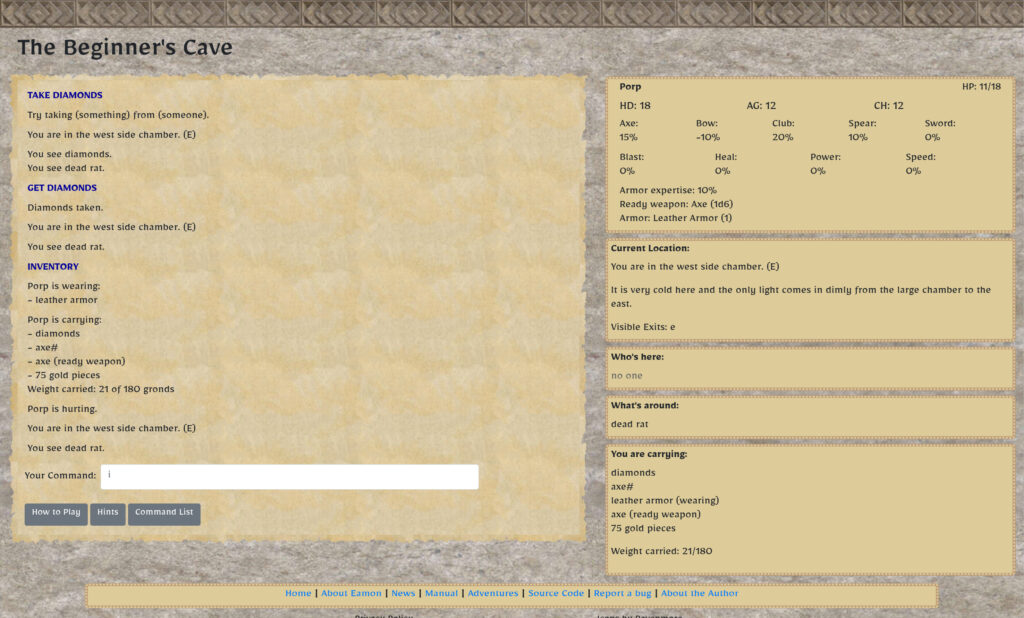
There’s a full Eamon Wiki, the Eamon Adventures’ Guild Online, the Adventurer’s Guide to Eamon, and the blog Renga in Blue’s description. Given that it’s an obscure text adventure system written in BASIC and created in 1979, it’s frankly astounding that there’s so much information on it on the Living Web.
I’m surprised that Eamon isn’t more widely remembered now, as there were hundreds of adventures (at least 280) made for it. The Digital Antiquarian wrote about the history and play of Eamon: Part One, Part Two, a liveblogged exploration, A Journey Into the Wonderful World of Eamon, and some expressed frustration on coming up with a definite history of Eamon.
Gaming Jay plays Eamon (33 minutes):
So, how do you play this?
First off, you should probably try the Eamon Remastered web-base recreation, which has a fair number of adventures to play. Here is its manual.
After you create your character (if you’re playing the Apple II original, make sure to follow directions in town, as the game is positively gleeful about killing newly-made characters), you’ll want to buy a weapon and some armor. Advancement in Eamon is not of the level-based D&D style, instead characters advance by doing. When you attack with a weapon, you might improve in your ability to use it. When you’re struck by an attack, you might improve in your use of armor. It lacks the “dopamine hit” (I hate that term) of gaining a level, but I think this is quite a more realisticm, and dare I say, better, method of character advancement. It’s more like the Runequest/Call of Cthulhu/Basic Role-Playing system, where most of a character’s ability is encoded within a number of individual skills. Though it’s a lot more gradual, it also means that characters are a lot more individual.
When you play it, you’ll find that it works basically like Infocom adventures did. Since each Eamon game is a program to itself, things could work very differently between them, but I think most of them tried to adhere to some shared conventions.
The “Beginners Cave” adventure is the intended first experience with EAMON. It provides you with some basic treasure, opponents and advancement. It is quite possible for a new character to die there, so treat this adventure with care. I found that there’s some quirks. “take [item]” tends not to work; “get [item],” however, does. “attack [monster]” can be used to attack in melee. There is a button, by the input box, that you can click for a list of available commands.
I don’t know if this is true of every adventure, but to get away from a battle you’re currently in, it won’t do to move out of it, if you don’t want to fight you should use the “flee” command, although monsters can follow you anyway if they choose. Flee sends you to the previous room you were in. If the monster that was menacing you chooses to follow, then I don’t know what else to do than just keep attacking and hope for the best.
I don’t have a lot of experience with Eamon myself, so I must leave you to your own devices for furthering your adventuring career. Good luck!

